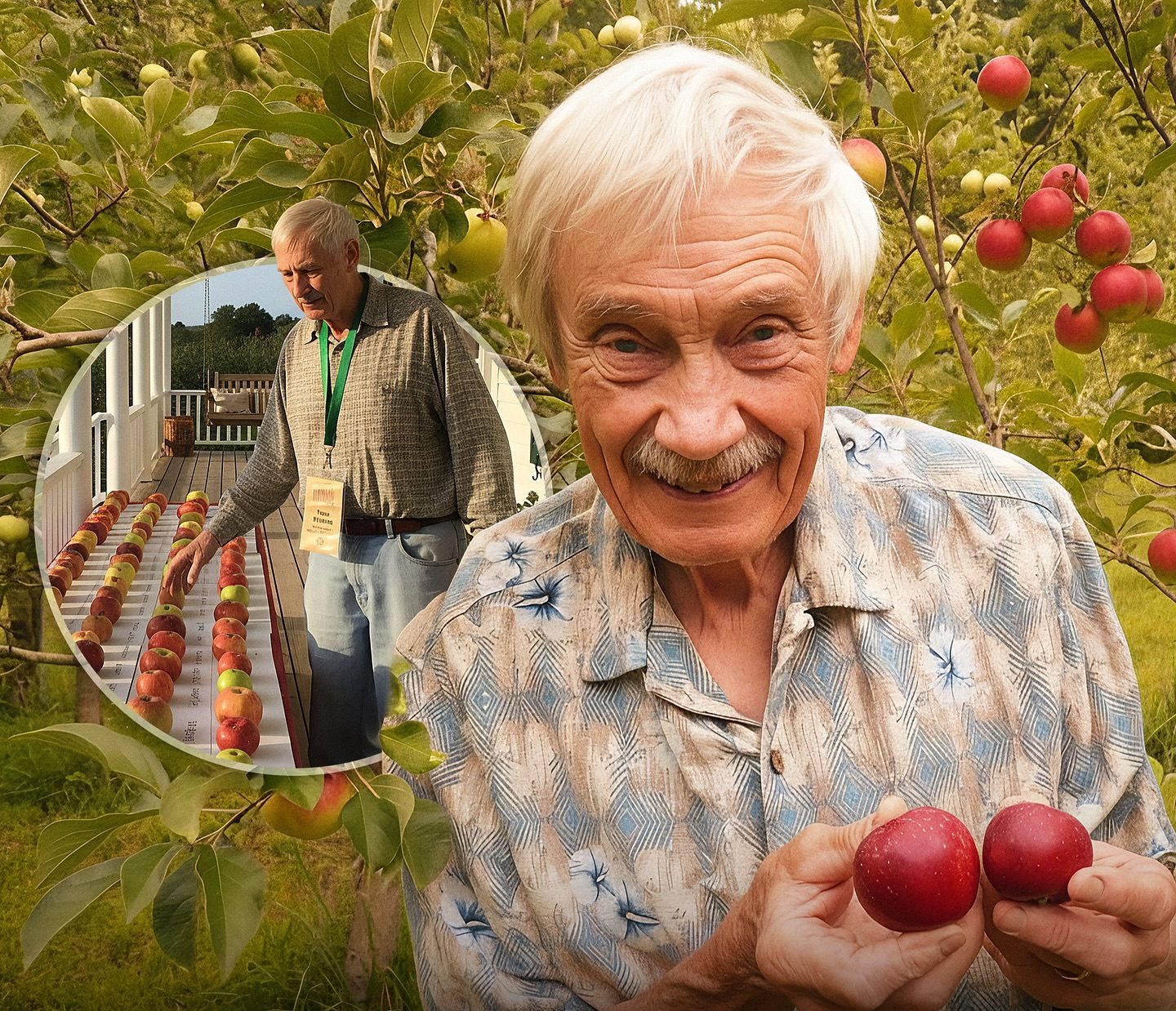How Retired Engineer Tom Brown Spent Decades Rescuing 1,200 Forgotten Apple Varieties and Built a Living Library of Fruit History
A Lifelong Mission Begins
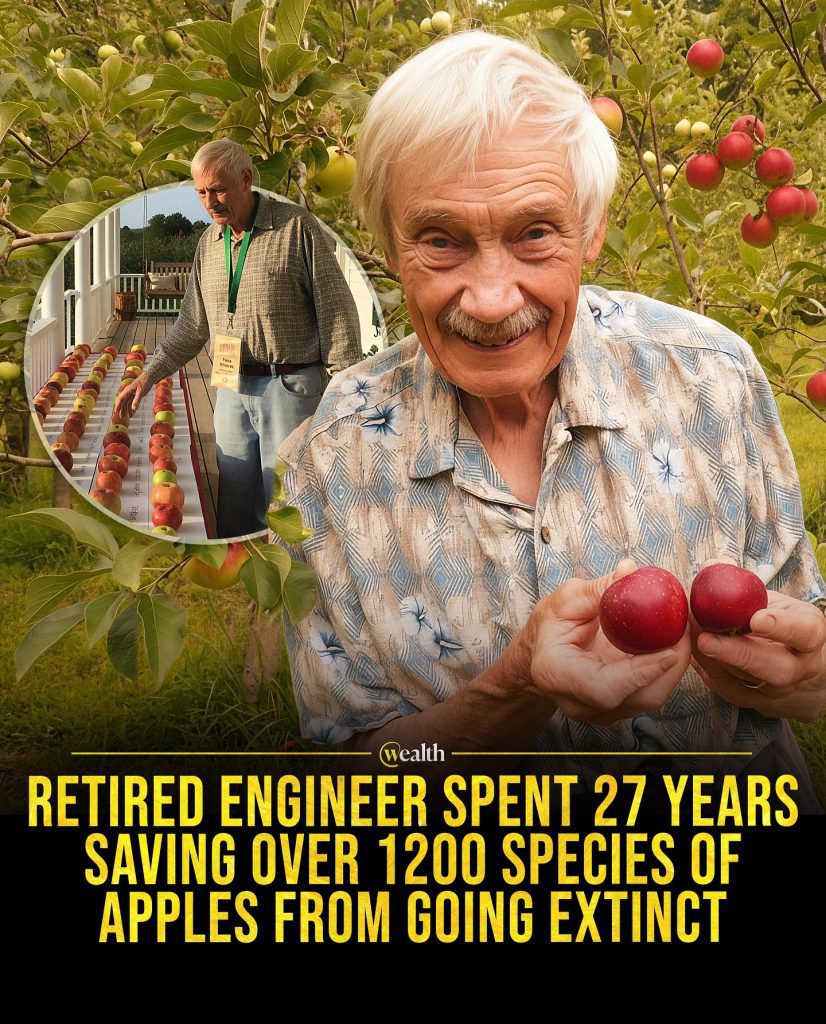
In 1999, Tom Brown, a retired engineer from North Carolina, found himself drawn into an unlikely mission that would eventually define his life. While many people spend retirement traveling or picking up hobbies, Brown became fascinated with the stories of old apple trees that once thrived across Appalachia. These weren’t the shiny red or green apples you find neatly stacked in grocery stores. These were heirloom apples, with names as colorful as their skins, tied to family farms and regional traditions. He realized that while North America once cultivated roughly 17,000 named apple varieties, the overwhelming majority had vanished, victims of changing tastes and industrial farming. Brown made it his mission to save as many as he could before they disappeared forever.
The Hunt for Lost Apples
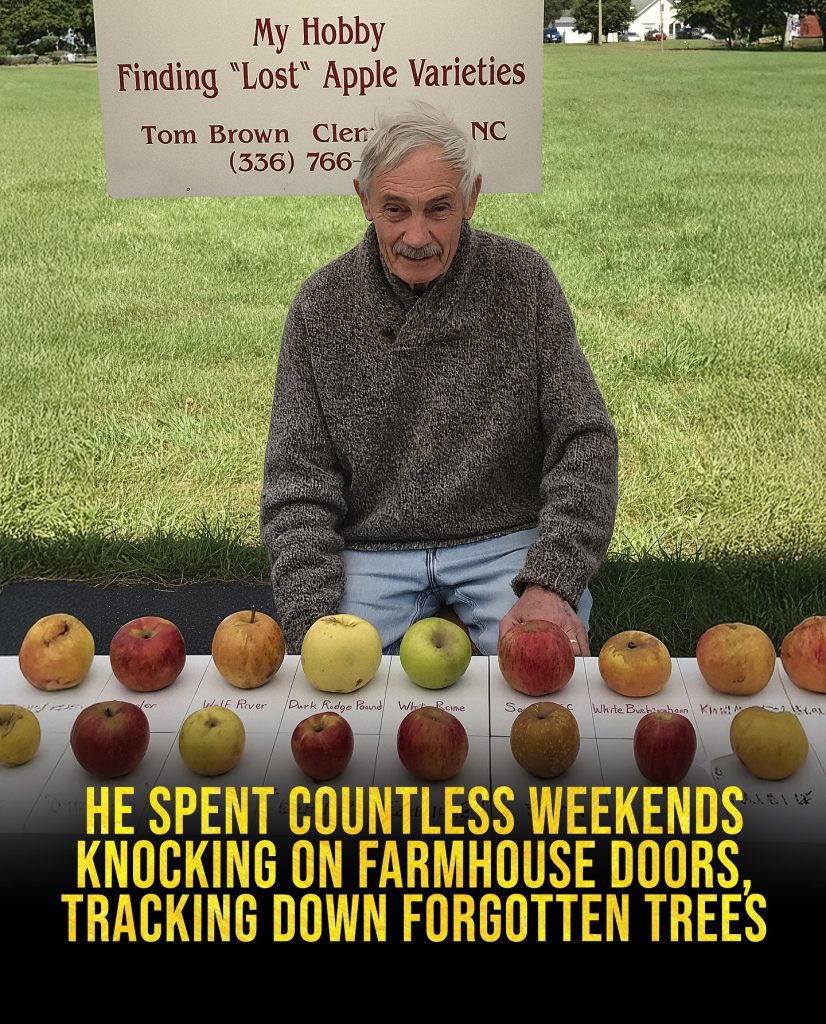
Armed with little more than curiosity, persistence, and a love of history, Brown began crisscrossing the Appalachian region. He knocked on farmhouse doors, asked elderly residents about the orchards they remembered, and followed whispers of forgotten trees tucked behind barns or on abandoned land. It wasn’t glamorous work. Some weekends were spent trudging through fields, comparing the fruit he found to decades-old records and seed catalogs. Yet, bit by bit, he pieced together a living treasure map of America’s lost apples. Each rediscovery wasn’t just a piece of fruit—it was a story, a connection to the past, and a fragment of cultural heritage being pulled back from the brink of extinction.
Building a Living Library
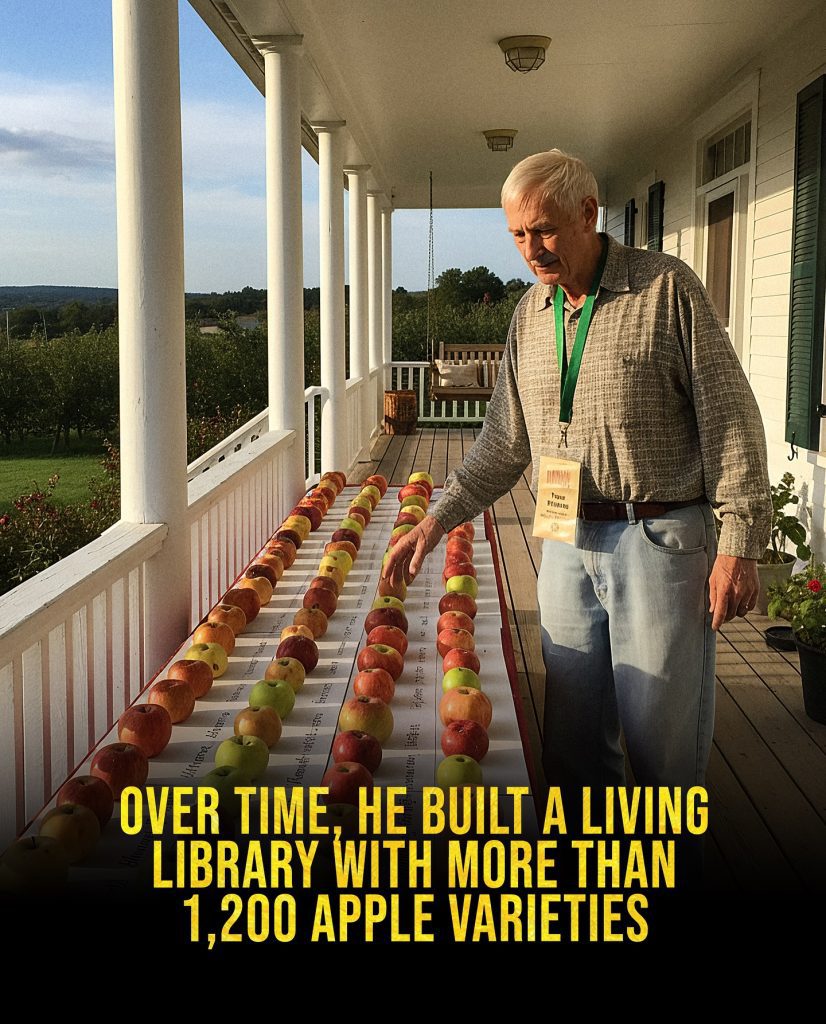
Over nearly three decades, Brown’s efforts grew into something extraordinary. He didn’t just track the apples down; he grafted them, cultivated them, and preserved them for future generations. Today, his orchard has become a living library of more than 1,200 distinct apple varieties. Walk through it and you’ll see apples of every imaginable color, size, and flavor profile—apples meant for cider, for baking, for long storage, and for fresh eating. Many of them carry names long forgotten outside of rural memory. Without Brown’s dedication, these varieties would have slipped away silently, leaving behind only a fraction of the diversity that once defined American orchards.
Apples for Families and the Future
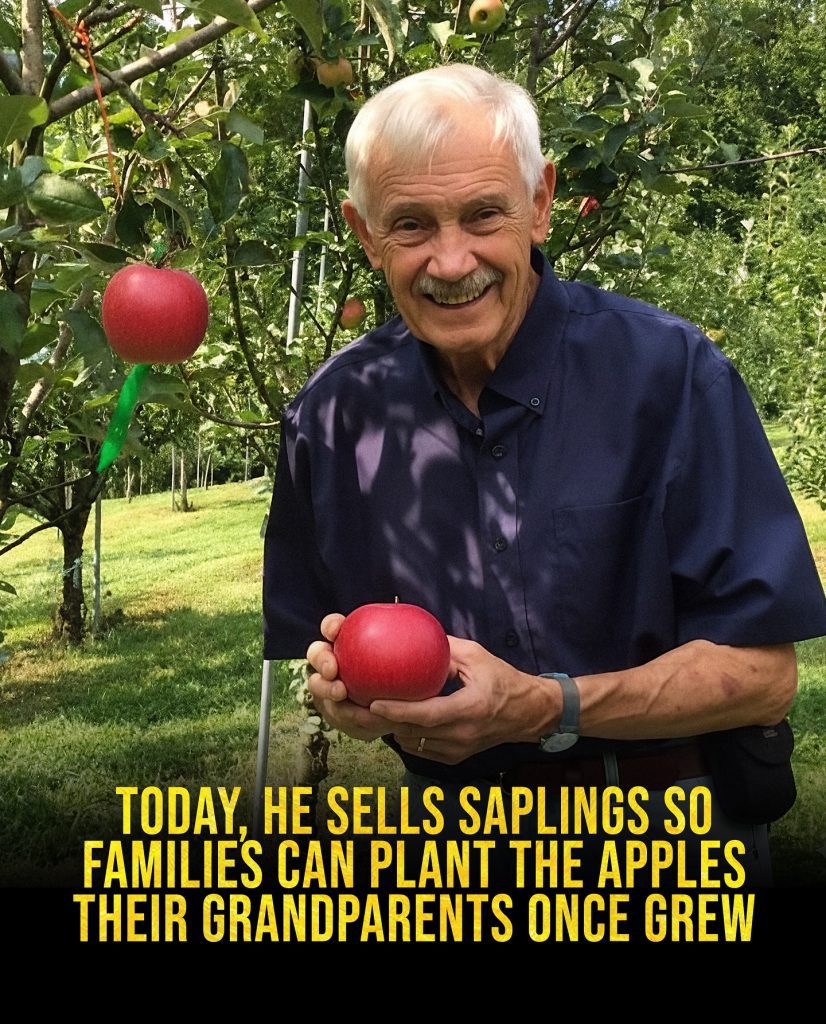
Brown doesn’t just keep the apples for himself. To ensure their survival, he sells grafted saplings for around $20 each, making it possible for families to replant the same apples their grandparents or great-grandparents once grew. In doing so, he has turned personal passion into community preservation. His work reminds people that apples are more than just fruit—they are living links to history, culture, and resilience. Each tree planted is a step toward restoring genetic diversity, which matters not just for nostalgia but for food security. In a world facing climate change and shifting agricultural demands, preserving a wide pool of apple varieties may one day prove critical.
A Legacy of Preservation
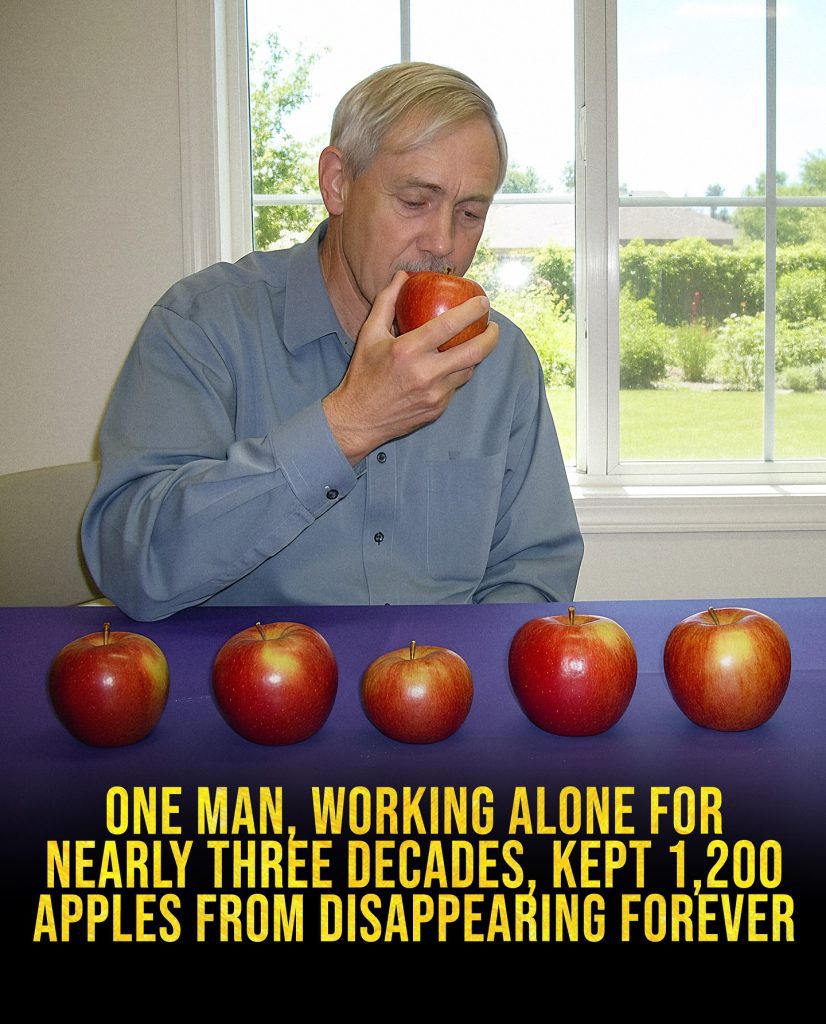
Tom Brown never set out to be a hero of biodiversity, but that is exactly what he has become. His story is not one of fame or fortune but of patience, persistence, and love for something most people take for granted. Every apple he has saved carries a piece of American history in its skin, a reminder of the countless farmers and families who once nurtured them. In an era when convenience often replaces tradition, Brown’s orchard stands as a quiet act of defiance, a promise that the richness of the past will not be lost to time.

